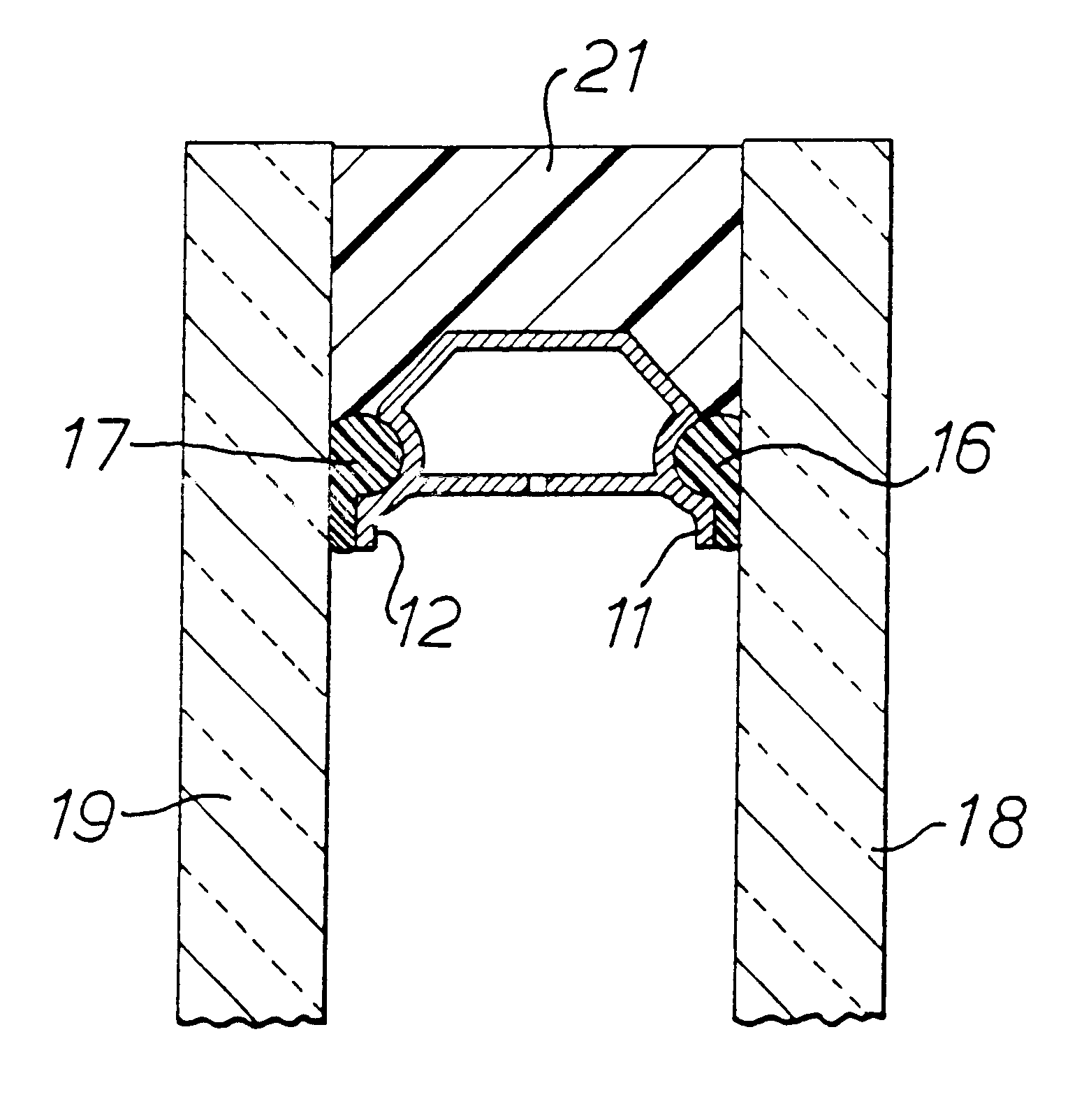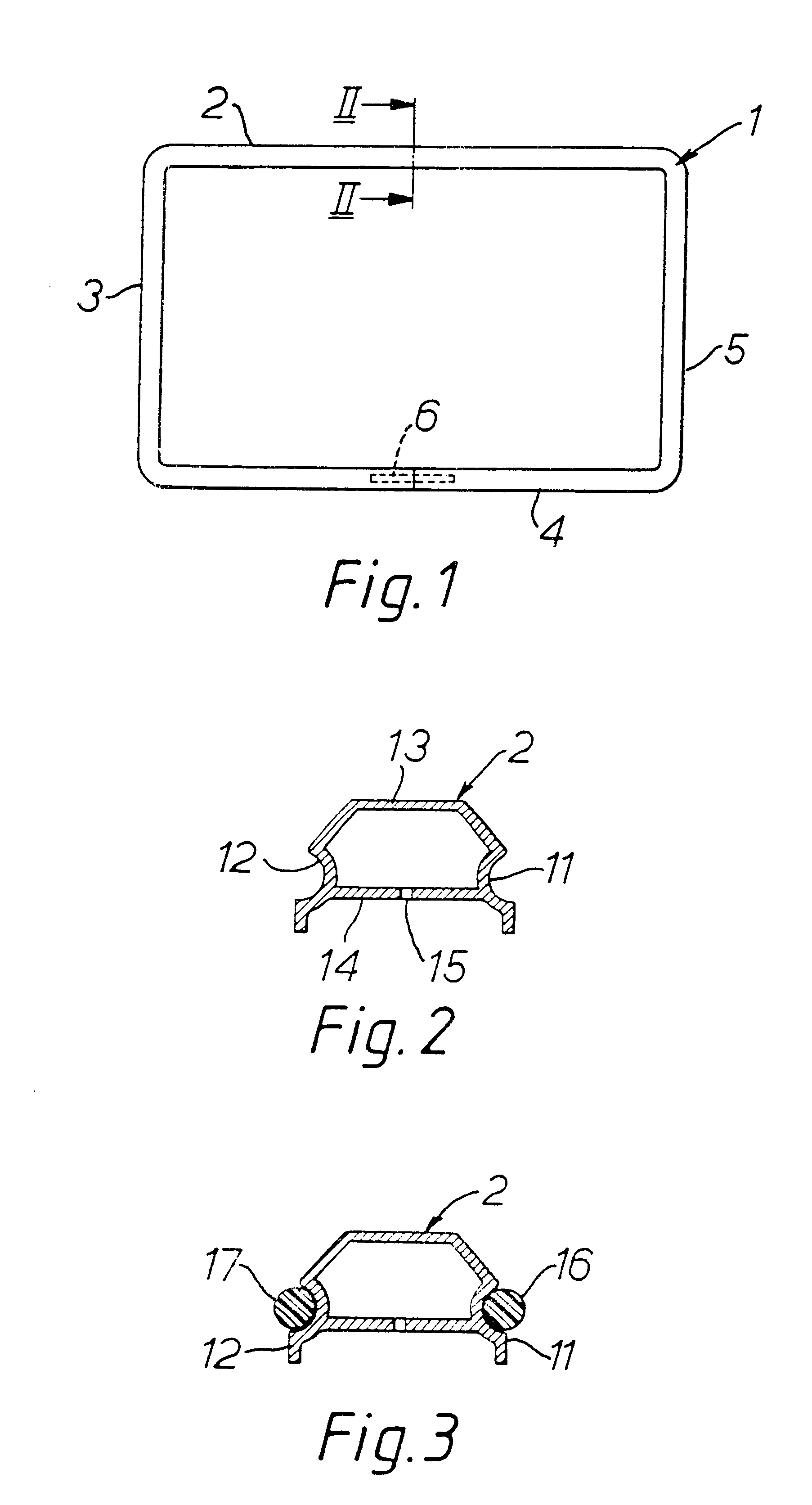Insulating units
a technology of sealing insulating and unit, which is applied in the direction of building components, constructions, buildings, etc., can solve the problems of increased moisture content of the gas between the panes, replacement of the unit, and longer li
- Summary
- Abstract
- Description
- Claims
- Application Information
AI Technical Summary
Benefits of technology
Problems solved by technology
Method used
Image
Examples
example 2
The procedure of Example 1 was repeated using PRC (trade mark) 469 two part polysulphide as secondary sealant in place of the Dow Corning silicone sealant. As in Example 1, all 10 units maintained a dew point below -50.degree. C. for over 700 cycles. After 728 cycles, one unit was dropped and removed from test. After 868 cycles, the dew point of one unit had risen to a temperature in the range -49.degree. C. to -40.degree. C.: the dew point of this unit increased to above 0.degree. C. (unit failure) after 1004 cycles, with the remaining units maintaining dew points below -50.degree. C. to 1004 cycles whereupon testing was terminated.
The thickness measurements showed similar trends to those observed in Example 1, except that the maximum thicknesses were observed somewhat later in the test procedure and the thicknesses increased at the mid points of the edges declined to substantially zero thereafter, with an overall negative increase i.e. a reduction on the original thickness, being ...
example 3
The procedure of Example 2 was repeated using PRC (trade mark) 449 two part polysulphide as secondary sealant in place of the PRC 469 used in Example 2; the PRC 449 has a higher modulus than PRC 469. All 10 test units maintained a dew point below -50.degree. C. for over 1000 cycles, when testing was terminated.
The thickness measurements again showed a general increase in thickness. Initially, this was greatest at the mid points of the long edges (around 1 mm after 150 cycles) and least at the mid points of the short edges (around 0.5 mm after 150 cycles) with an intermediate value at the corners. However, as the testing continued, the thickness increased to over 1 mm at the corners after approximately 800 cycles, substantially equal, increases at the mid points of the long and short edges.
PUM
| Property | Measurement | Unit |
|---|---|---|
| length | aaaaa | aaaaa |
| internal radius | aaaaa | aaaaa |
| thick | aaaaa | aaaaa |
Abstract
Description
Claims
Application Information
 Login to View More
Login to View More - R&D
- Intellectual Property
- Life Sciences
- Materials
- Tech Scout
- Unparalleled Data Quality
- Higher Quality Content
- 60% Fewer Hallucinations
Browse by: Latest US Patents, China's latest patents, Technical Efficacy Thesaurus, Application Domain, Technology Topic, Popular Technical Reports.
© 2025 PatSnap. All rights reserved.Legal|Privacy policy|Modern Slavery Act Transparency Statement|Sitemap|About US| Contact US: help@patsnap.com



